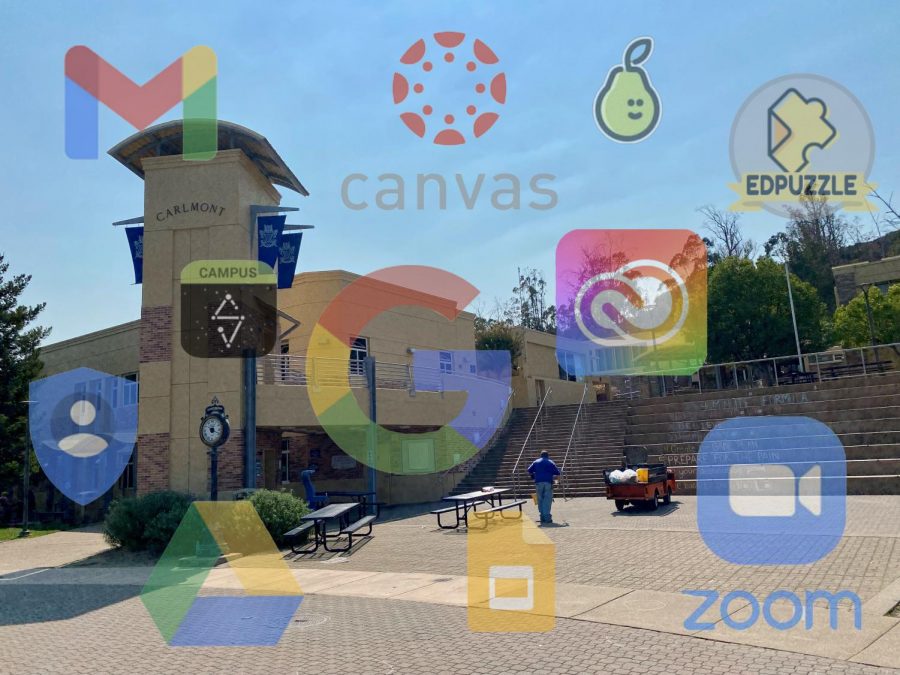Isolation, increased reliance on technology, and dropping grades have plagued students during the 2020-2021 school year, yet many teachers are still instituting the methods they used last year.
Following a long year of remote learning, many students yearned for a return to traditional pencil and paper schooling, but many teachers had already made the switch to a technology-based curriculum. That poses the question: is remote learning the way of the future, or was it a one-year free trial whose subscription will not be renewed?
There are negative effects that result from staring at screens all day. According to The Atlantic, continued use of phones and technology can lead to mental health issues like extreme depression and suicidal tendencies, making some students argue that classes should be a technology-free zone.
“There are effects of staring at a screen all day, I mean we do it all the time with our phones, and I just think it’s important that we still keep the non-digital aspect present in school for time away from technology,” said Delaney Paulus, a senior at Carlmont.
Other Carlmont students expressed similar sentiments as Paulus, also noting that they absorb more information if it is presented in a physical format rather than a screen.
“I think that learning online is possible, but for me, I will remember the information a lot longer if I read it in a real book, write it on paper, and have a chance to have conversations and discussions with peers about it, versus just watching an online lecture and taking notes on my computer,” said Annika Andersen, a junior at Carlmont.
Teachers and students at Carlmont agree that distance learning accomplished its task of helping students learn and teachers teach while in a pandemic. However, technology-based instruction will never be the primary method of schooling while other options are viable.
“Zoom instruction has been incredibly helpful during the pandemic, but that such instruction is clearly inferior to in-person schooling for the majority of students,” said Carlmont English teacher Martin Turkis.
The COVID-19 pandemic was not the first time there have been questions about the effectiveness, or lack thereof, of technology use in classrooms, as numerous studies have been conducted testing whether or not students using technology perform better, or at least as good, as those who use physical materials.
A study conducted at West Point between 2014 and 2016 split students into three groups: a “technology-free” group that was barred from using tablets or laptops in class, a class where students used laptops and tablets to take notes and view electronic textbooks, and a control group in which students were given limited technology use in class. According to this study, there were not only zero benefits for students to use technology as the primary way to learn, but there were actually lower scores in the group of students who used technology compared to the technology-free group.
Despite this, most schools are encouraging teachers to use tools from remote learning as they transition back to in-person school. They argue technology has a place in school, it just should not be the primary tool used to teach unless absolutely necessary.
Carlmont’s principal, Ralph Crame, feels technology use is situational, as some teachers are more comfortable and capable than others. “I think it’s a fine balance teachers have to find, and I think it’s subject-specific as well,” Crame said. “I think teachers should embrace the technology that they find enhances their curriculum delivery and enhances the student experience in the classroom, but you can’t replace a lot of the in-person learning that happens with direct instruction and other things along those lines.”
However, not all of the year online was a waste for students. While traditional grades may have dropped, students learned practical skills that, according to Soundview Magazine, will help many in future jobs and professional relationships.
“In distance learning, I would say I learned a lot about how to use online resources which is really helpful. I definitely got a better understanding of Canvas and Google, which I know will be useful in the future,” Paulus said.
Andersen felt similar about the skills she learned during remote learning.
“Learning how to write professional-sounding emails and learning to communicate with teachers on the computer will help in the future when I have to email bosses and co-workers,” Andersen said.
While there are some positives that will come from the year of remote learning, the negatives are yet to be known. According to the University of Pennsylvania at Wharton, a lack of knowledge retention from the 2020-2021 school year, lasting depression across a variety of students demographics, and a sour memory of what students had to endure to learn in quarantine. Students who cannot afford high-quality laptops and tablets are expected to experience the worst of the effects of distance learning.
Only time will reveal what the future of schooling will look like, but it is safe to say that there will be technology involved, either for the benefit or detriment of those in the classrooms and behind the computer screens.

































